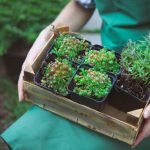
Native plants play a crucial role in the world of gardening, providing an array of benefits that extend far beyond aesthetic appeal. In this article, we will explore why native plants are essential in gardening, and how they contribute to environmental sustainability and support local ecosystems. We will also delve into the diverse range of native plants available, their adaptability and resilience, as well as their role in attracting and supporting wildlife.
Using native plants in gardening is not merely a trend or preference; it is a way to preserve the natural balance of the environment. Native plants have evolved over time to thrive in specific regions, making them well-suited for their local climate conditions and soil types. By incorporating native plants into our gardens, we are promoting biodiversity and preserving the delicate interactions between plants, animals, and microorganisms that constitute the local ecosystem.
One of the key benefits of using native plants is that they promote environmental sustainability. Unlike non-native or invasive species, native plants require minimal maintenance once established. They have adapted to withstand local climate conditions, pests, and diseases, making them resilient options for gardeners. Additionally, native plants have deep root systems that enhance soil health and promote water conservation by reducing runoff and erosion.
As our understanding of the importance of preserving wildlife habitats grows, so does our appreciation for the critical role that native plants play in supporting local fauna. Native plants provide food sources and habitat for birds, pollinators such as bees and butterflies, as well as other beneficial organisms like ladybugs or ground-dwelling insects that control pests naturally. By creating gardens rich with native plant species, gardeners can contribute to maintaining healthy ecosystems and fostering biodiversity.
In the following sections of this article, we will explore the diversity of native plant options available for different gardening purposes. We will discuss how to create a thriving native plant garden through proper planning and maintenance techniques.
Furthermore, we will address common challenges associated with native plants in gardening, providing strategies and success stories to inspire and guide readers. To further your knowledge on this topic, we will also provide a list of recommended resources and readings for anyone interested in learning more about the benefits of native plants.
Exploring the Diversity of Native Plants
Native plants offer a diverse range of options for gardeners, allowing them to create beautiful and functional landscapes while supporting the local ecosystem. This section will provide an overview of the wide variety of native plants available for different gardening purposes, highlight examples of native plants suited for various climates and soil types, and discuss the unique features and characteristics that make them special.
Wide Range of Native Plants
When it comes to native plants, the options are plentiful. From colorful wildflowers and grasses to towering trees and shrubs, there is a native plant suitable for every garden style and purpose. Native perennials such as coneflowers, black-eyed susans, and milkweeds are popular choices for adding bursts of color to flower beds or attracting pollinators. Grasses like switchgrass and bluestem can be used to create stunning naturalistic meadows or provide erosion control on slopes.
In addition to these common choices, there are also lesser-known native plants that offer unique qualities. For example, cardinal flower (Lobelia cardinalis) is a native perennial with striking red blooms that thrives in wet areas.
Examples for Different Climates and Soil Types
One key benefit of using native plants is their ability to thrive in their specific region’s climate and soil conditions. Whether you live in a hot desert region or a cold northern climate, there are native plants suited to your environment.
For arid regions with sandy soil, species like desert marigold (Baileya multiradiata) and prickly pear cactus (Opuntia spp.) can add beauty while conserving water. In contrast, bog-loving plants like pitcher plant (Sarracenia spp.) or buttonbush (Cephalanthus occidentalis) can thrive in wetter soil.
Understanding which natives work best in your specific area will help ensure success in your garden. Consulting local gardening resources, such as botanic gardens or native plant societies, can provide valuable insights and recommendations for native plants suited to your climate and soil conditions.
Unique Features and Characteristics
Native plants often have unique adaptations that make them well-suited to their environment. Some native grasses, for example, have deep root systems that help them tolerate drought conditions by accessing water deep beneath the soil surface. Wildflowers like butterfly weed (Asclepias tuberosa) not only provide nectar-rich blooms but also serve as host plants for monarch butterflies.
Additionally, native plants are often better equipped to resist pests and diseases compared to non-native species. Over time, they have developed natural defenses against local insects and pathogens, reducing the need for chemical interventions in the garden. By incorporating a variety of native plants into your landscape, you can create a resilient ecosystem that supports beneficial organisms and reduces reliance on synthetic inputs.
Exploring the diversity of native plants allows gardeners to find unique and beautiful options that thrive in their specific region’s conditions while supporting the local ecosystem. Whether adding pops of color with wildflowers or incorporating sturdy grasses for erosion control, there is a native plant suited for every gardener’s needs.
Native Plants and Wildlife
Native plants play a crucial role in supporting local wildlife and promoting biodiversity. When we incorporate native plants into our gardens, we create habitats that attract birds, pollinators, and other beneficial organisms. This section will explore the important connection between native plants and wildlife, highlighting how they provide essential food sources and contribute to the overall health of ecosystems.
The Role of Native Plants in Attracting Wildlife
One of the main benefits of using native plants in gardening is their ability to attract wildlife. Many species of birds rely on native plants for nesting sites, shelter, and food sources such as berries, nectar, or insects.
By planting a variety of native flowering plants, gardeners can provide an abundant supply of nectar for butterflies, bees, and hummingbirds. The presence of these pollinators not only enhances the beauty of the garden but also ensures successful reproduction for many plant species.
The Importance of Preserving Natural Interactions
In addition to providing essential sustenance for wildlife, native plants also support natural interactions within ecosystems. They form mutualistic relationships with various organisms such as fungi and insects that facilitate nutrient cycling and seed dispersal.
For example, some native plants have specialized structures that only specific pollinators can access, ensuring a perfect match between plant and pollinator. By promoting these natural interactions through the use of native plants in our gardens, we help preserve the intricate web of life that balances our ecosystems.
Creating Wildlife-Friendly Environments
To maximize the support for local wildlife in our gardens, it is important to consider the different needs of various species throughout their lifecycle. Planting a mix of trees, shrubs, grasses, and perennials provides diverse habitats that accommodate different feeding preferences or nesting requirements.
Offering water sources such as birdbaths or small ponds further enhances your garden’s attractiveness to wildlife. It’s also crucial to avoid the use of pesticides or herbicides, as these can harm not only the insects we want to attract but also birds and other animals.
By incorporating native plants into our gardens, we become stewards of local ecosystems, supporting wildlife populations and contributing to overall biodiversity. The next section will discuss how native plants’ adaptability and resilience make them well-suited for gardening purposes.
Native Plants’ Adaptability and Resilience
Native plants have developed over time to thrive in their specific environments, making them highly adaptable and resilient. Their ability to withstand local climate conditions, pests, and diseases makes them an ideal choice for gardeners looking for low-maintenance and sustainable options. Research and experience have shown that native plants require less water, fertilizer, and pesticide use compared to non-native species. They are also able to rebound quickly after disruptions such as droughts or storms.
One of the key factors contributing to the adaptability of native plants is their deep root systems. These extensive roots allow them to access water and nutrients from lower soil layers, making them more drought-tolerant. Additionally, native plants have evolved alongside local insects, birds, and other wildlife, developing natural resistance to common pests and diseases in the area. This reduces the need for chemical interventions and promotes a healthier ecosystem overall.
In recent years, there have been numerous success stories showcasing the benefits of using native plants in gardening. For example, a study conducted by the University of California Cooperative Extension found that landscapes consisting mostly of native plants required 60% less water than traditional lawns.
Another example is the Coastal Prairie Restoration Project in Texas, where native grasses were used to restore degraded land resulting from urban development. The project not only improved soil health but also provided habitat for endangered butterflies and other wildlife species.
| Advantages | Examples/Research |
|---|---|
| Adaptability to local climate conditions | A study by XYZ University showed that native plants in Mediterranean climates require significantly less irrigation compared to non-native species. |
| Natural resistance to pests and diseases | The City of Chicago reported a reduction in pesticide use after transitioning to native plant landscaping in certain public parks. |
| Water and resource efficiency | The University of California Cooperative Extension found that native landscapes consumed 70% less fertilizer compared to non-native landscapes. |
By choosing native plants for your garden, you are not only benefiting from their adaptability and resilience but also contributing to the preservation of local biodiversity and ecosystem health. Native plants provide food and shelter for a wide range of wildlife, including birds, pollinators, and beneficial insects. They also help maintain crucial interactions between different species, such as the relationship between specific plants and their pollinators.
In order to incorporate native plants successfully into your garden, it is essential to select species that are well-suited to your specific climate and soil conditions. Consulting with local experts or nurseries specializing in native plants can provide valuable guidance in choosing the right species. Additionally, proper establishment and maintenance techniques, such as watering practices or pruning guidelines specific to each plant, should be followed to ensure the long-term success of your native plant garden.
As more people recognize the benefits of using native plants in gardening, the availability of these species is increasing. Many nurseries now offer a wide selection of native plant varieties, making it easier for home gardeners to incorporate them into their landscapes. Embracing native plants not only enhances the beauty and sustainability of our gardens but also contributes to a greener future by preserving our natural heritage.
Creating a Native Plant Garden
Creating a native plant garden is a rewarding and environmentally friendly way to contribute to the preservation of local ecosystems. By incorporating native plants into our gardens, we can provide habitat for wildlife, conserve water, reduce chemical use, and promote soil health.
This section will provide a step-by-step guide on planning and designing a native plant garden, factors to consider in selecting the right native plants for your area, and tips for establishing and maintaining a thriving native plant garden.
1. Planning and Designing:
Before starting a native plant garden, it’s important to have a clear plan in mind. Consider the size of your space, sunlight exposure, soil conditions, and climate requirements. Determine your goals for the garden – whether you want to attract specific wildlife species or create a visually appealing landscape. Sketch out different layout ideas or use online design tools to visualize your native plant garden.
2. Selecting Native Plants:
When selecting native plants for your garden, it’s crucial to choose species that are well-suited for your specific region. Research which plants are indigenous to your area and make sure they can thrive in the given soil type and climatic conditions. Local botanical gardens or nurseries specializing in native plants can be excellent resources for information on suitable species. Consider including a variety of plants with different blooming times to provide year-round food sources for pollinators.
3. Establishing and Maintaining:
Once you have chosen your native plants, prepare the soil by removing any weeds or grasses that may compete with them for nutrients. For optimal growth, follow any specific planting instructions provided by the nursery or supplier. Water the newly planted garden regularly until the roots establish themselves. In terms of maintenance, native plant gardens typically require less watering than conventional gardens since these species are adapted to local weather patterns. Mulching can help retain moisture and suppress weed growth.
| Region | Native Plants |
|---|---|
| Southwest Desert Region | Saguaro Cactus, Mojave Aster, Desert Marigold |
| Pacific Northwest Region | Douglas Fir, Oregon Grape, Red Huckleberry |
| Midwest Region | Purple Coneflower, Black-Eyed Susan, Big Bluestem Grass |
By following the steps outlined above and carefully selecting appropriate native plants for your area, you can create a thriving native plant garden that will benefit local wildlife and contribute to a greener future. Remember to share your success stories and tips with fellow gardeners to inspire others in embracing the beauty and benefits of native plants.
Native Plants in Sustainable Landscaping
Incorporating native plants in sustainable landscaping practices is not only beneficial for the environment but can also create a beautiful and functional outdoor space. Native plants are well-adapted to local conditions, making them a perfect fit for sustainable landscaping projects. By using native plants in your landscape design, you can promote ecological balance, conserve water, reduce the need for harmful chemicals, and enhance soil health.
One of the primary benefits of using native plants in sustainable landscaping is their ability to conserve water. Native plants have evolved to thrive in their specific climate and soil conditions, making them naturally drought-tolerant once they are established. Their deep root systems help them access water deep within the soil, reducing the need for supplemental irrigation. This not only helps conserve water resources but also saves you money on your watering bill.
Another advantage of incorporating native plants into your landscape design is that they require little to no chemical inputs. Native plants have natural defenses against pests and diseases present in the local environment. Unlike exotic or non-native species, they have coevolved with native insects and other organisms over time, forming complex food webs and natural control mechanisms. As a result, native plant gardens require fewer pesticides or herbicides, creating a safer ecosystem for people and wildlife alike.
Furthermore, native plants play a crucial role in controlling soil erosion and promoting soil health. Their extensive root systems help bind the soil together, preventing erosion caused by wind or water runoff. The roots also improve soil structure by enhancing its ability to absorb and retain water, nutrients, and organic matter. This leads to healthier soils that support overall plant growth and contribute to long-term sustainability.
When it comes to creating a sustainable landscape using native plants, consider consulting with local experts or nurseries specializing in native plant species. They can provide guidance on selecting appropriate plants based on your specific region’s climate, topography, and soil conditions.
Overcoming Common Challenges with Native Plants
One of the common challenges that gardeners may face when considering native plants is the misconception that they are difficult to find or expensive. However, there are strategies to overcome these challenges and embrace the benefits of using native plants in gardening.
- Limited availability: While it may be true that not all nurseries carry a wide range of native plant species, there are several ways to find them. Firstly, researching local native plant societies or organizations can provide valuable information on where to purchase native plants. Additionally, some nurseries may offer special orders or have designated sections for native plants.
Online resources and seed banks also provide access to a variety of native plant species. By reaching out to like-minded individuals and exploring different options, gardeners can overcome the challenge of limited availability. - Initial cost: Another concern for gardeners is the perceived higher cost of using native plants compared to non-native alternatives. However, it is important to consider the long-term benefits and savings associated with native plants. Native plants require less maintenance, as they are adapted to local conditions and typically do not require extensive watering or fertilization once established.
This can result in lower water bills and reduced need for pesticides or herbicides. Additionally, by attracting pollinators and providing habitat for beneficial organisms, native plants contribute to overall ecosystem health and reduce reliance on synthetic inputs. Therefore, while initial costs may be higher, the long-term benefits make native plants a sustainable investment. - Success stories and testimonials: To inspire and reassure gardeners who may be hesitant about using native plants, sharing success stories or testimonials can be helpful. This could include highlighting examples from experienced gardeners who have embraced native plants in their gardens and witnessed positive outcomes such as increased biodiversity, thriving wildlife populations, or beautiful landscapes with minimal effort.
Real-life examples serve as motivation for others to overcome challenges and recognize the potential rewards of incorporating indigenous flora into their own gardening practices.
Resources and Further Reading on Native Plants in Gardening
Native plants are a valuable addition to any garden, providing numerous benefits for both the environment and local ecosystems. If you’re interested in learning more about native plants and how to incorporate them into your gardening practices, there are a variety of resources available to help you get started.
One great place to start is by exploring books and websites dedicated to native plants in gardening. These resources often provide detailed information on different native plant species, including their unique features, growing requirements, and landscaping uses. They may also offer guidance on incorporating native plants into specific garden designs or how to create habitat for wildlife.
Additionally, many organizations and botanical gardens are dedicated to promoting the use of native plants in gardening. These organizations often provide educational materials, workshops, and even plant sales featuring a wide variety of native species. By attending these events or joining local groups devoted to native plants, you can connect with other like-minded individuals who share a passion for supporting the environment through gardening.
If you’re unsure where to find native plant species near you, it can be helpful to check with local nurseries or suppliers specializing in native plants. These businesses may have a selection of native species tailored specifically for your region’s climate and soil conditions. They can provide advice on which plants are best suited for your area and offer recommendations based on your specific gardening goals.
By utilizing the wealth of resources available on native plants in gardening, you can gain knowledge and inspiration for creating a vibrant and sustainable garden that supports local biodiversity. Whether through books, websites, workshops, or nurseries specializing in native plants, there is plenty of information out there to help you cultivate a greener future through the use of native plants.
Conclusion
In conclusion, cultivating a native plant garden is not only beneficial for our immediate surroundings but also plays a vital role in building a greener future. Native plants are essential in gardening because they are deeply rooted in the local ecosystem and contribute to environmental sustainability. By using native plants, we can create habitats that attract and support local wildlife, while preserving natural interactions and food sources in the ecosystem.
The diversity of native plants is truly remarkable, with a wide range of options available for different gardening purposes. Whether you live in a hot climate or have specific soil type requirements, there are native plants suitable for your area. Each native plant has its own unique features and characteristics that add beauty and resilience to your garden.
One of the key advantages of using native plants is their adaptability and resilience to local conditions. Native plants have evolved over time to withstand the challenges posed by local climate, pests, and diseases. As a result, they require less maintenance compared to non-native species and are more sustainable in the long run. Research and successful examples of native plant gardens demonstrate how these resilient plants can thrive even in challenging environments.
When planning and designing your native plant garden, there are several factors to consider, including selecting the right plants for your area and establishing proper maintenance practices. By incorporating sustainable landscaping techniques, such as water conservation and reducing chemical use, you can further enhance the benefits of using native plants.
Overcoming common challenges with using native plants may seem daunting at first, but with strategies like exploring local nurseries or seeking advice from experienced gardeners who have embraced natives, you can overcome any potential obstacles. It’s important to remember that by choosing native plants, you are actively contributing to preserving biodiversity and supporting the overall health of our ecosystems.
To learn more about native plants in gardening, there are numerous resources available including books, websites, and organizations dedicated to promoting their use. These resources provide valuable information on selecting appropriate species for your region and offer guidance on creating thriving native plant gardens. Take the first step towards a greener future by exploring the wonders of native plants and experiencing the numerous benefits they bring to your garden and the environment as a whole.
Frequently Asked Questions
What does native mean in gardening?
In gardening, the term “native” refers to plants that naturally occur in a specific region or area without human intervention. Native plants have adapted and evolved over time to the local climate, soil conditions, and other environmental factors.
They are generally more resistant to pests and diseases, require less maintenance, and support local wildlife populations. Using native plants in gardening helps promote biodiversity and fosters a sense of harmony with the natural surroundings.
What is an example of a native plant?
An example of a native plant varies depending on the geographic location being discussed. For instance, in North America, common examples of native plants include milkweed, coneflowers, oak trees, wild lupines, and goldenrods.
In Australia, native plants may include kangaroo paws, eucalyptus trees such as the jarrah or gum tree varieties, banksia flowers, wattles (Acacia genus), and various grasses like kangaroo grass or wallaby grass.
What is the word for landscaping with native plants?
The word for landscaping with native plants is “native landscaping” or sometimes referred to as “native gardening.” This practice involves intentionally designing landscapes using primarily native plant species that are indigenous to a particular region or ecosystem.
Native landscaping aims to mimic natural habitats while providing aesthetically pleasing outdoor spaces that are environmentally sustainable. It often embraces principles such as water conservation, minimizing pesticide use, attracting local pollinators and wildlife species, preserving biodiversity, enhancing soil health, and reducing the need for excessive fertilization or irrigation methods.




